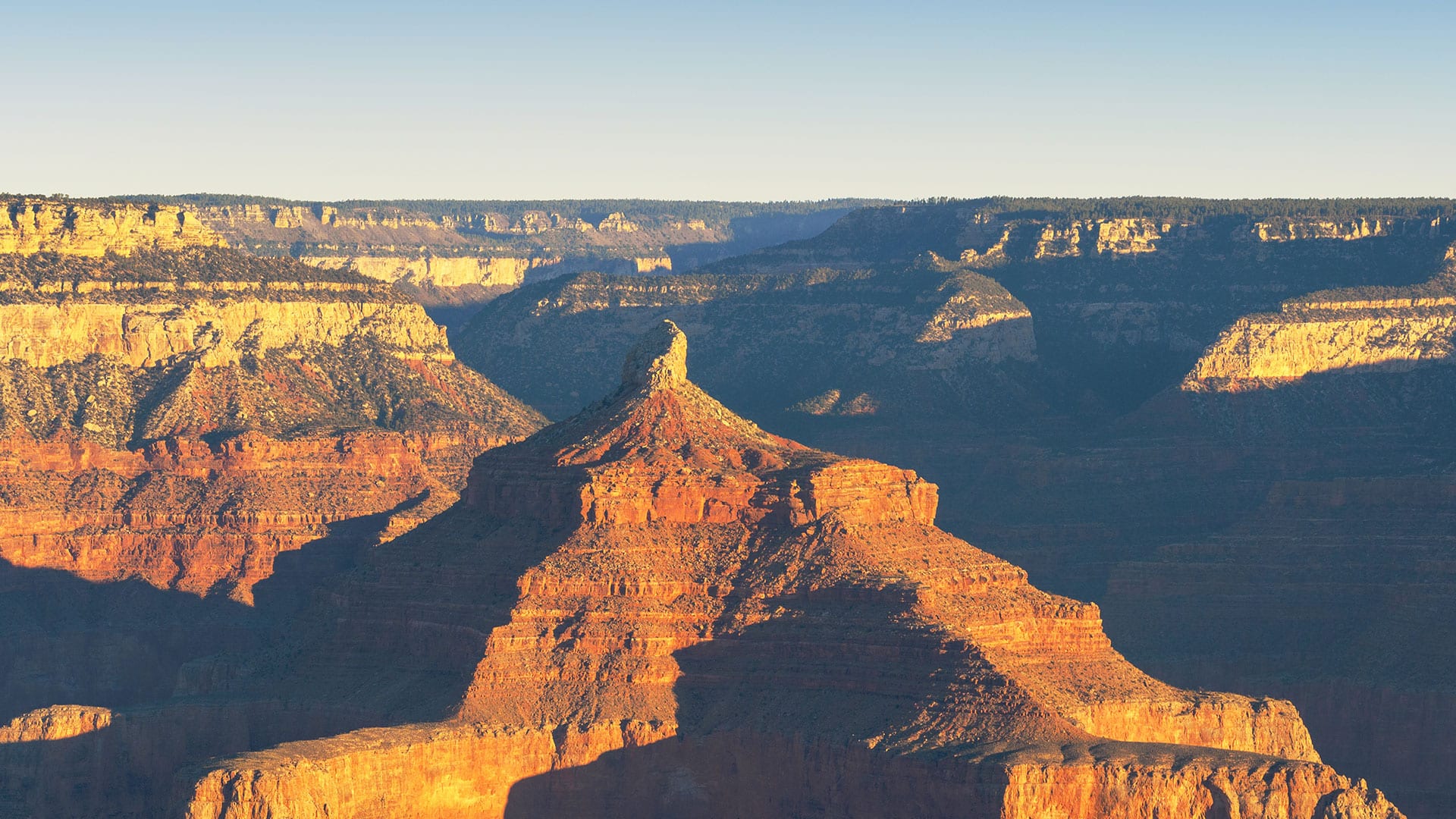So what is this Isis Temple? Well for starters, it’s not actually a temple. It is a formation of coconino sandstone at it’s highest point of 7,012 feet. Under the coconino sandstone is the Hermit Shale and the uppermost group of redbeds, called the Supai group, sedimentary rocks sandstone, siltstone, and shell that typically are red. After the layers of redbeds is Redwall limestone, which forms the cliff and sits above the Muav limestone and the Bright Angel Quartzite.
The Unkar Group, comprised of Shimuno Quartzite, Hakatai Shale and Bass Formations, listed from top to bottom, forms the base of the Isis Temple. Its lays on the Vishnu Basements, a crystalline rocks, named after a natural rock structure. The Shinumo Quartzite forms the base of the Isis Temple wish units that are extremely erodable and forms the slope below the red, purplish and yellow colors, known as the Hakatai Shale. There is the Tapeats Sandstone located around the Shimuno Quartzite island edge and can be seen from Bright Angel Canyon. From the west and northwest you can see it from the Phantom Creek drainage. The Isis Temple Cheops Pyramid is part of a Fault block and is uplifted.

For hikers, dormitories are where they stay. There are two male dorms and two female dorms, each have up to five bunk beds, there is a shower and shared restrooms for guests. If bedding is a concern when packing then keep this in mind, bedding and towels are provided. All other non-hikers stay in other cabins that can fit two to even ten guests. These cabins are provided with bedding, cold water sinks, toilet and of course liquid shampoo. All other items such as showers, bath towels, hot water sinks can be found at a central location.
If solitude with a touch of genuinity is what you’re looking for, then getting a reservation down there is the next must on your bucket list, as well as most time consuming. Why? Space is limited, and also because in order to get a spot down there you must first be selected in their online lottery system upon applying. Of the three different ways to reach the bottom of the Grand Canyon, it seems hiking is much more preferred and most rewarding. Just be sure to have plenty of water, good sturdy shoes, and remember to pace yourself, roundtrip, you’re both losing and gaining in elevation and the hike itself takes about 4-5 hours down and 4-6 to hike back up.

